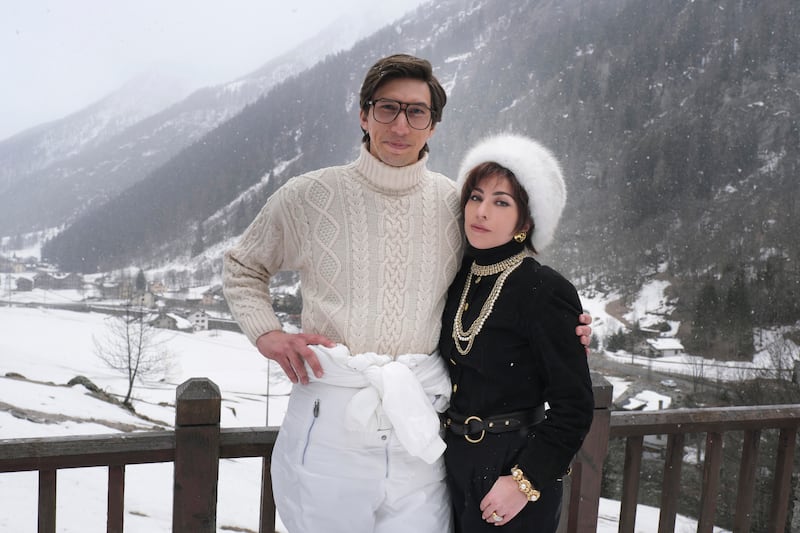Savio Tung will never forget the “shock” at hearing that Maurizio Gucci had been shot and killed.
On March 27, 1995, Mr Tung was one of the senior members of Investcorp working on buying and turning around the Gucci fashion house.
“The news of Maurizio’s murder was shocking for all of us, we simply could not believe it,” says Mr Tung.
“Maurizio was very likeable, very mild-mannered. He was extremely personable, a very nice guy.”
As the world subsequently learnt, the Gucci heir, 46, had been assassinated by a hitman hired by his ex-wife, Patrizia Reggiani.
The episode is now the focus of the new Hollywood movie, House of Gucci, directed by Ridley Scott of Alien and Blade Runner fame, and starring Lady Gaga as Patrizia and Adam Driver as Maurizio.
In the film, the Moroccan-British actor Youssef Kerkour plays Nemir Kirdar, the legendary late founder of Investcorp, the global alternative private equity group based in Bahrain.
When Maurizio died, Investcorp gained control of Gucci. Maurizio had ceded power, and Kirdar and his colleagues, including Mr Tung, were in the process of transforming the hitherto haphazardly managed Italian label into a luxury powerhouse.
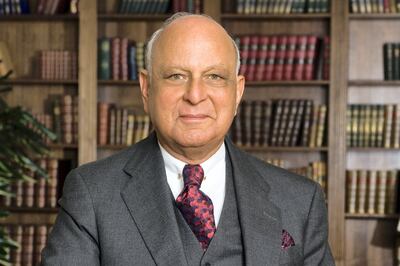
Today, Investcorp has $37 billion under management and is a global financial colossus. Things looked very different back then: Investcorp was in its infancy and Gucci was an early, high-profile, high-risk investment.
Mr Tung, 70, still actively involved in Investcorp (he is the only senior figure remaining from those days) as a senior advisor to the group, led by Mohammed Alardhi, the executive chairman, is able to smile when he cites Gucci as one of “our top five best investments. Because of its size. Because of its complexity. Because of the risks of failing. And because a lot of effort went making it a success”.
Lauded as one of the founding fathers of Investcorp and, indeed, the private equity industry, Mr Tung was a leading banker when he joined Investcorp in 1984. He quit Chase Manhattan, where he was instrumental in developing the US bank’s presence in the Gulf region, to team up with Kirdar, also ex-Chase, and co-founders, Elias Hallak, Mike Merritt and Cem Cesmig.
Mr Tung, who lives in New York, says Gucci, “from an investment point of view was exceptional for us, its return was ten times”. Then, he laughs: “But of course, there were, shall we say, a few related issues.”
The unlikely plunge of financiers into the mercurial, forever shifting, designer goods market actually began much earlier, in 1984.
Investcorp had only been in existence for two years when Kirdar bought Tiffany & Co. The jewellery firm was part of Avon cosmetics in the US.
“Tiffany was a corporate orphan,” says Mr Tung. “It was in the hands of Avon who were more into selling cosmetics. We bought it and set about growing the Tiffany brand. We opened Tiffany stores in London, Shanghai, Mexico City and elsewhere. We internationalised it, we took it in a different direction – we believed in it, we created this feeling of excitement about Tiffany, we knew that with a name like Tiffany we could do a lot more.”
What was a jeweller with revenues of $4 million is now a $2bn giant – due in no small part to the foundations laid by Investcorp. Tiffany was Kirdar’s first big deal, yielding a profit of $100m when Investcorp floated it on the stock market in 1987. The investment was a masterstroke by Kirdar, one that propelled the fledgling Investcorp onto the world stage.
While Investcorp was boosting Tiffany, at Gucci, Maurizio had ambitions of his own. He saw the luxury industry was on the cusp of exploding, becoming an aspirational “must have” for the growing number of the world’s rich. Unfortunately, he realised Gucci was in severe danger of missing out on the boom.
The company belonged to the extended Gucci family and was mired in all manner of internal feuds and disputes, some of which ended up in litigation – against this febrile backdrop it was going nowhere.
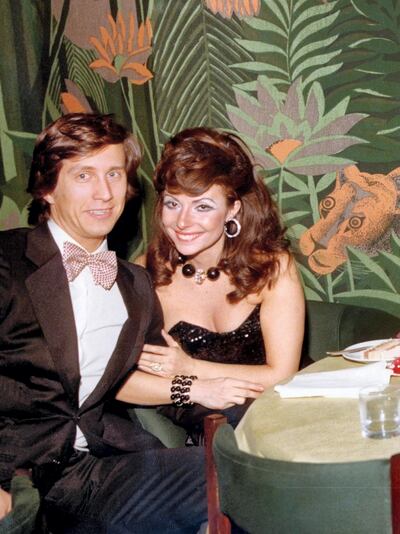
Maurizio, who inherited control from his father Rodolfo in 1983, turned to Andrea Morante, executive director at Morgan Stanley, who introduced him to Kirdar (Mr Morante later moved to Investcorp and worked on the Gucci holding).
It was a pivotal moment and a meeting of minds: Maurizio wanted to kick-start the business; Kirdar was eager to expand Investcorp’s investment and asset management portfolio.
“We were fortunate to have got into Tiffany when we did,” says Mr Tung. “We were very successful and Tiffany had put us on the map, especially in the US. Then Gucci came along, and the timing could not have been better – private equity was in its infancy and largely unknown, and we were looking to make a name for ourselves in Europe.”
Gucci was famous for its high-quality accessories, shoes, scarves and dresses. The “double-G” logo was synonymous with the likes of Jackie Onassis (the “Jackie bag” was a Gucci bestseller), Princess Grace of Monaco, Elizabeth Taylor and Princess Diana. But the brand was also making the same mistake that had befallen other top-end houses, of expanding into far too many areas and allowing others to manufacture Gucci products.
“At the time we got involved, tourists could buy Gucci towels on beaches in Mexico,” says Mr Tung. “The company had struck all sorts of licensing deals, the Gucci name was everywhere, the glamour and exclusivity were threatened with disappearing.”
Kirdar and his partners set about buying out the Gucci relatives. It was a mammoth exercise, negotiating with them and persuading them, one by one, to sell. “It took all our time, buying block by block from the uncles and cousins. It took us years to collect together the pieces,” recalls Mr Tung. It was a difficult path, fraught with the possibility of failure. “If one of them said ‘no’ we were stuck.”
Even when they reached 50 per cent, there was Maurizio and his 50 per cent to contend with.
“We had to buyout Maurizio, which took another one-and-a-half years,” says Mr Tung. “We had to wait, to go slowly, to be appreciative of his circumstances and the emotion for him in selling. In the end, we managed to do it – I still to this day can’t believe we bought out his 50 per cent as easily and as smoothly as we did. Only then, once that was done, were we able to get in there properly and carry out our execution plan.”
Together, Maurizio and Kirdar had identified where the issues lay. Maurizio had begun the task of overhauling the brand, Investcorp took it further.
Out went the mass marketing and production of cheaper ranges, such as plastic and canvas handbags. They cut back heavily on sales to department stores and outlets that Gucci itself did not own. In a coup that made the rest of the industry sit up, Dawn Mello was hired from New York’s Bergdorf Goodman as chief designer. She, in turn, appointed another American, Tom Ford, as the women’s ready-to-wear director. Mr Ford duly became creative director and his provocative, daring collections received wide acclaim, lifting Gucci and making him a design superstar.
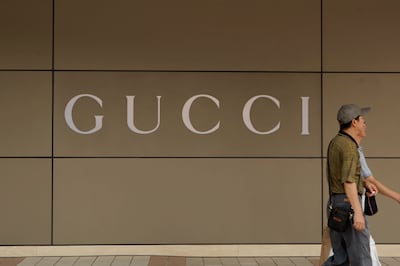
Mr Ford worked closely with Domenico De Sole, once the Gucci family’s lawyer, latterly its extremely able chief executive. The line-up was formidable: Mr Ford and Mr De Sole on the inside, and Kirdar and Investcorp on the outside, all working to the same objective. The latter bought financial discipline to the group: they closed the company’s lavish new premises in Milan and a grand company villa in Florence; the headcount was slashed from 1,700 to 1,170.
It wasn’t all about cutting, however. Supply lines were made more efficient; stores that were Gucci’s own were renovated and new ones opened. They moved the label determinedly upmarket. To detract from the history of squabbles and cheaper products they launched a marketing campaign aimed at firmly stressing lustre and prestige. Part of the push involved sponsoring cultural events, linking Gucci with some of the globe’s most creative artists.
The drive came at a cost, initially. “Eliminating the bad licensing agreements saw annual revenues of $300 million halve overnight,” says Mr Tung. “But we never stopped believing we could turn Gucci round and make it more exclusive.” Investcorp was aided by Mr De Sole and Mr Ford who were “steady eddies in implementing the plan”.
It was vital that Mr Ford was allowed to maintain the creative momentum. “There was always a compromise between instilling financial discipline and encouraging the fashion element.” Mr Tung believes they achieved that and more, and put down a blueprint for others, such as the British luxury fashion brand Burberry, to later follow.
“As private equity investors we were financially driven; in the past, fashion houses and their family owners didn’t understand business so much, they had little grasp of money, little knowledge of the P and L, of profit and loss. We were very disciplined in our approach.”
As if the scale of the change was not enough, the investors and executives were under considerable external pressure. “The banks were on to us, so was the fashion community, so were our own investors.” Mr Tung can chuckle now, but he says: "As investment managers, we were quite stressed.”
When Maurizio died, he’d already technically left the firm – he’d sold his shares to Investcorp – but he’d remained an influence.
“Maurizio had his own, long-standing Gucci clients so they had to be brought onside with what we were doing,” says Mr Tung. “And he was the Family, he was Maurizio Gucci.”
Nevertheless, once the horror subsided, there was relief that his killing had no impact on the direction Gucci was being taken, and no impact on the finances.
Investcorp had sounded out possible buyers for the business but in the end decided to launch an IPO to raise the funds to continue the transformation. “We could have sold the company to one of the luxury-owning families, but we had discussed with Morgan Stanley going down the IPO route. They gave it a $1bn valuation – today it would be regarded as a ‘unicorn’. We weren’t selling to get out,” says Mr Tung, “We were listing it to ensure more cash was coming in, so the company could carry on growing.”
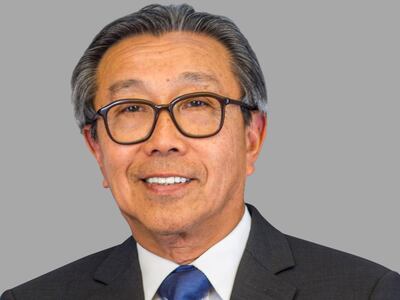
In the two years following the flotation, Investcorp wound down its investment, realising $1.9bn. Gucci eventually was subsumed into the French fashion conglomerate Pinault Printemps Redoute, which later morphed into Kering. Gucci has revenues of around $10bn a year, employs 17,000 people and operates 480 stores.
It was an exhilarating, occasionally hair-raising, ride. “I personally put some of my own money in,” says Mr Tung, “and I was looking at a loss for a while. But we stuck to our task, we turned it around and then came the IPO, so everything was okay in the end.”
Will he watch the film? He nods. “I met Maurizio several times and he had many qualities, and he was very happy with Investcorp, with what we were doing, but he was distracted by events to do with his welfare and in his personal life. Yes, certainly I would like to see it.”
If he could, would he do it all again? He laughs. “Gucci was very satisfying for us. Would I do it again? You would have to ask the people now at Investcorp, but perhaps not. The investors had to be patient for a very long time.”
